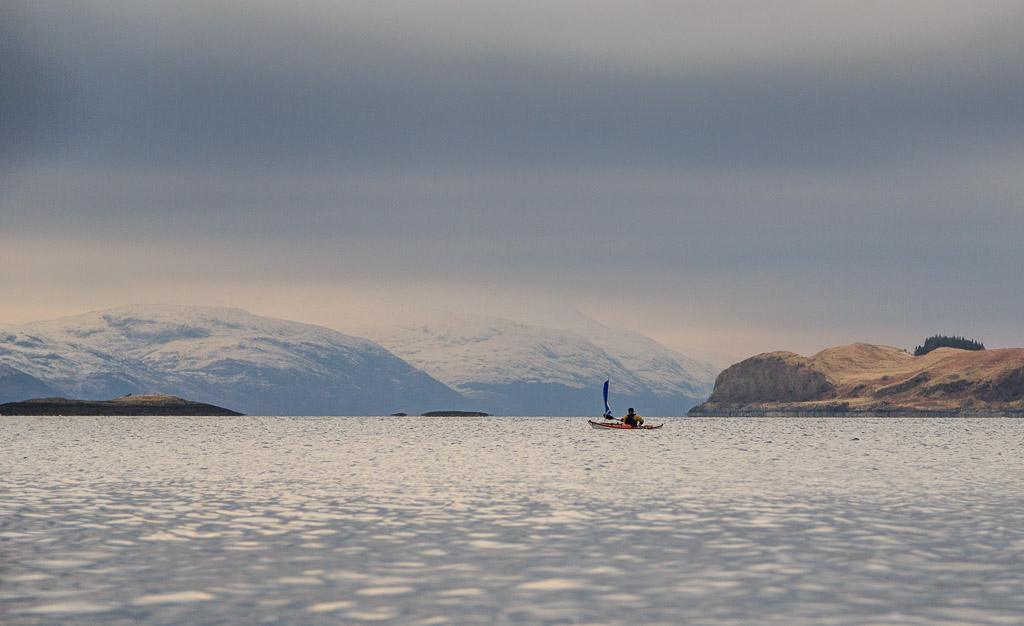There was not a breath of wind and FV Holly Rose OB158 was lying at her mooring perfectly motionless.
We arrived at the excellent Glenuig Inn just before dark but by the time we walked the dogs the sun was well set. We returned to the welcoming lights of the inn and enjoyed a tasty meal with Ian and Alan.
The following morning we left Alison with my car and the dogs then drove for a short distance through the morning rush hour to...
...Samalaman Bay on the south shore of the Sound of Arisaig. It was not long after HW and the beautiful...
...white shell sands were not yet fully exposed.
A light smirr of rain was falling, the sort that soaks everything despite the small size of its droplets. To the NW there was a little brightness on the horizon but to the..
...east the clouds were well down on the hills. The branches and lichens on the sessile oak trees were dripping wet.
Then a remarkable thing happened. Alan and I had just set off when a gap appeared in the clouds...
...and we got a great view across to Eigg and...
...the snow streaked mountains of Rum behind.

The north side of the Sound of Arisaig was still hidden by low cloud but...
..ever so gradually the clouds began to lift. As we approached...
...Rubha Ghead a' Leighe, the headland at the southern entrance to the Sound of Aisaig, the wind and swell..
...began to pick up and we enjoyed some fun in close proximity to the rocks by Ian's Inlet.
Having said that we did not inspect the rocks quite so closely as Ian had done on one of our previous visits and we all remained relatively dry!





















































